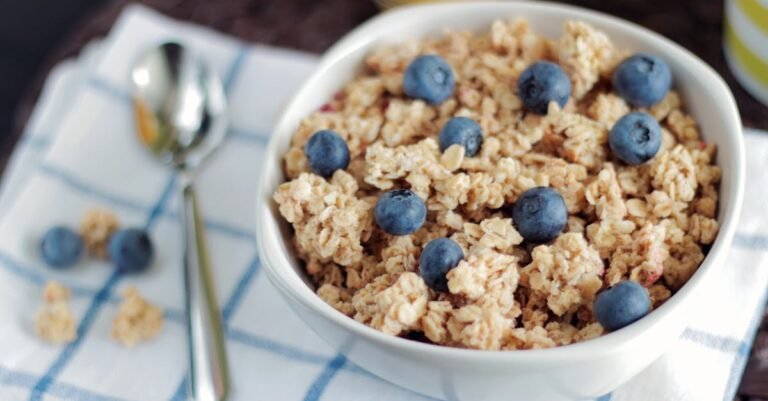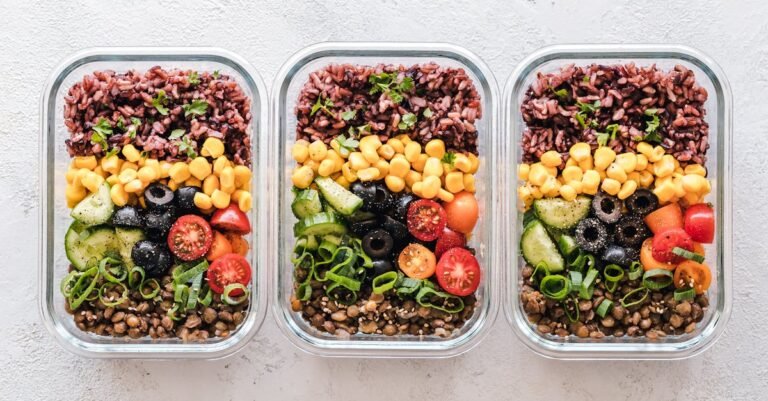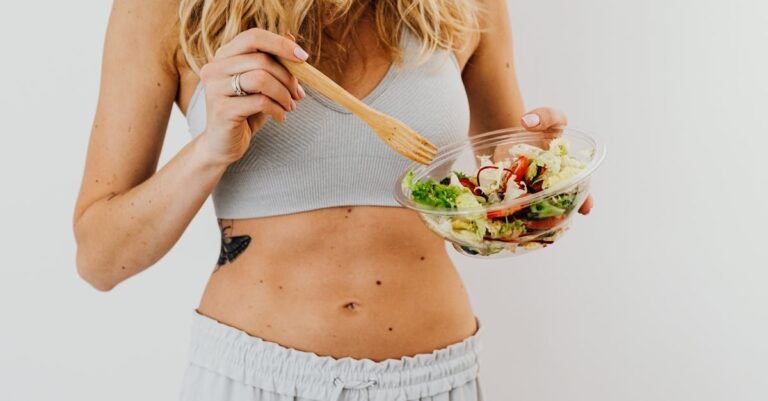Table of Contents
Healthy Dinner Recipes For Fitness Goals: Fuel Your Body Right!
Why Your Dinner Choice Matters More Than You Think
The Building Blocks of a Fitness Focused Dinner
Delicious Dinners for Weight Loss Warriors
Fueling Gains: Dinners for Muscle Building
Quick & Easy Healthy Dinners for Busy Bees
Meal Prep Magic: Setting Yourself Up for Success
Conclusion: Your Dinner, Your Fitness Journey
Frequently Asked Questions (FAQs)
Healthy Dinner Recipes For Fitness Goals: Fuel Your Body Right!
Okay, let’s talk dinner. After a long day, maybe a tough workout, the temptation to just grab takeout or throw something random together is REAL. I get it. But what if I told you that your dinner choice could be the secret weapon in smashing your fitness goals? Whether you’re aiming to shed some pounds, build lean muscle, or just feel more energized, nailing your evening meal is crucial. Forget bland, boring “diet food.” We’re talking delicious, satisfying meals that work with your body, not against it. Ready to transform your dinner plate into a fitness boosting powerhouse?
Why Your Dinner Choice Matters More Than You Think
You might think breakfast is the most important meal, or maybe lunch fuels your midday grind. And they’re important, no doubt! But dinner plays a unique and vital role, especially when you have fitness goals. Think about it: your body does most of its repairing and rebuilding overnight while you sleep. What you eat for dinner provides the raw materials for that crucial process. Eating a nutrient dense dinner helps:
- Muscle Repair and Growth: After exercise, your muscles are crying out for protein to repair microscopic tears and grow stronger. Dinner is a prime opportunity to deliver those essential amino acids.
- Replenish Energy Stores: You’ve used up glycogen (stored carbohydrates) during the day and especially during your workout. A smart dinner helps top up these stores, so you wake up feeling refreshed, not depleted.
- Manage Hunger & Cravings: A balanced dinner keeps you full and satisfied, preventing late night snacking urges that can derail your progress. Nobody wants to wake up starving at 2 AM, right?
- Optimize Hormones: Certain nutrients consumed in the evening can influence hormones related to sleep, recovery, and metabolism.
Skipping dinner or eating nutrient poor meals essentially leaves your body unprepared for its overnight recovery shift. It’s like asking a construction crew to rebuild a house without giving them any bricks or mortar! Don’t sabotage your hard work in the gym with poor dinner choices.
The Building Blocks of a Fitness Focused Dinner
So, what exactly makes a dinner “fitness friendly”? It’s all about balance and choosing the right components. Forget complicated rules; focus on these key building blocks:
Protein Power: The Repair Crew
Protein is non negotiable, folks. It’s the star player for muscle repair, satiety, and maintaining lean body mass, whether you’re losing fat or gaining muscle. Aim for a good portion of lean protein in every dinner.
- Lean Meats: Chicken breast, turkey breast, lean cuts of beef (like sirloin or flank steak), pork tenderloin.
- Fish: Salmon (rich in omega 3s!), tuna, cod, tilapia, shrimp. Fatty fish like salmon offer bonus anti inflammatory benefits.
- Plant Based: Lentils, beans (black beans, chickpeas, kidney beans), tofu, tempeh, edamame, quinoa (a complete protein!).
- Eggs: A versatile and affordable protein source.
- Dairy: Greek yogurt or cottage cheese can even feature in savory dinner components or as a high protein side.
Think of protein as the dedicated repair crew showing up after a long day of work (or a workout!) to fix things up and make them stronger for tomorrow.
Carbohydrates: Choosing Your Fuel Wisely
Carbs often get a bad rap, but they are your body’s preferred energy source! The key is choosing the right kind of carbs, especially at dinner. We want complex carbohydrates that provide sustained energy release and fiber, rather than simple sugars that lead to energy crashes.
- Whole Grains: Quinoa, brown rice, oats (yes, savory oats!), whole wheat pasta (in moderation), farro, barley.
- Starchy Vegetables: Sweet potatoes, butternut squash, pumpkin, peas, corn. These are packed with vitamins and fiber.
- Legumes: Beans and lentils double dip here, providing both protein and complex carbs.
Your carb needs will vary based on your activity level and goals. If you had an intense workout, you might need more carbs to replenish glycogen. If it was a rest day or your goal is fat loss, you might opt for a smaller portion or focus more on non starchy veggies. It’s about smart fueling, not carb phobia!
Healthy Fats: Don’t Fear Them!
Fat doesn’t necessarily make you fat! Healthy fats are essential for hormone production, nutrient absorption (especially fat soluble vitamins like A, D, E, and K), and providing long lasting energy. They also add flavor and help you feel full.
- Avocado: A creamy, nutrient dense powerhouse.
- Nuts & Seeds: Almonds, walnuts, chia seeds, flax seeds, pumpkin seeds (great as toppings!).
- Olive Oil: Extra virgin olive oil is perfect for dressings or drizzling over cooked food.
- Fatty Fish: Salmon, mackerel, sardines – again, pulling double duty with protein and omega 3 fats.
Focus on unsaturated fats and limit saturated and trans fats often found in processed foods and fried items. A little healthy fat goes a long way in creating a satisfying and nutritionally complete meal.
Fiber & Veggies: The Unsung Heroes
Volume! Nutrients! Fiber! Non starchy vegetables should take up a significant portion of your dinner plate. They are low in calories but high in vitamins, minerals, antioxidants, and fiber. Fiber is crucial for digestive health and helps you feel full, which is super helpful for managing weight.
- Leafy Greens: Spinach, kale, romaine, arugula.
- Cruciferous Veggies: Broccoli, cauliflower, Brussels sprouts, cabbage.
- Other Favorites: Bell peppers, onions, garlic, mushrooms, tomatoes, zucchini, asparagus, green beans.
Don’t be afraid to pile them high! Roasting, steaming, stir frying, or eating them raw in a salad are all fantastic ways to incorporate more veggies. Think color – the more colors on your plate, generally the wider the variety of nutrients you’re getting.
Delicious Dinners for Weight Loss Warriors
Trying to shed some pounds? Your dinner needs to be satisfying enough to prevent late night cravings but controlled in calories and packed with nutrients. The focus here is often on lean protein, tons of fiber rich veggies, and controlled portions of complex carbs and healthy fats.
Lean & Green: Veggie Packed Power Bowls
Power bowls are amazing because they’re so customizable and make it easy to load up on the good stuff. They look impressive but are often simple to assemble.
Bowl Basics
Here’s a simple formula:
- Base: Start with a bed of leafy greens (spinach, mixed greens, kale) or a small portion of quinoa or cauliflower rice.
- Protein: Add grilled chicken breast strips, baked tofu cubes, lentils, chickpeas, or grilled shrimp.
- Veggies (Load ’em up!): Roasted broccoli, bell peppers, cherry tomatoes, cucumber slices, shredded carrots, roasted sweet potato cubes (use a smaller portion for weight loss).
- Healthy Fat: A quarter of an avocado, a sprinkle of pumpkin seeds, or a light vinaigrette dressing made with olive oil and lemon juice.
- Flavor Boost: Fresh herbs (cilantro, parsley), a squeeze of lime, salsa, or a dollop of plain Greek yogurt mixed with herbs.
The key is controlling the higher calorie components like grains, starchy veggies, and fats while maximizing the low calorie, high fiber vegetables and lean protein. It’s filling, nutritious, and keeps calories in check.
Flavorful Fish Feasts
Fish is a fantastic lean protein source, and options like salmon offer those beneficial omega 3 fatty acids. Baking or grilling fish is much healthier than frying.
- Baked Salmon with Roasted Asparagus: Simple, elegant, and quick. Season a salmon fillet with lemon juice, dill, salt, and pepper. Toss asparagus spears with a tiny bit of olive oil, salt, and pepper. Bake both on a sheet pan at around 400°F (200°C) until the salmon is cooked through and the asparagus is tender crisp (usually 12 15 minutes). Serve with a lemon wedge.
- Grilled Tilapia with Mango Salsa: Grill or pan sear tilapia fillets seasoned with chili powder and cumin. Top with a fresh salsa made from diced mango, red onion, cilantro, jalapeno (optional), and lime juice. Serve alongside a large green salad. The sweetness of the mango complements the fish beautifully and adds nutrients without heavy sauces.
These meals feel light yet satisfying, hitting your protein needs and providing healthy fats and micronutrients without excessive calories.
Fueling Gains: Dinners for Muscle Building
If your goal is to pack on muscle, your dinner needs to provide ample protein for repair and sufficient carbohydrates and calories to fuel growth and replenish energy stores. You need more overall energy than someone focused purely on weight loss.
The Chicken & Sweet Potato Champion Combo
This is a classic for a reason! It delivers high quality protein and complex carbohydrates – exactly what your muscles crave after a workout.
- The Protein: Bake, grill, or pan sear a generous portion of chicken breast (aim for 6 8 oz or more, depending on your needs). Season it well – garlic powder, onion powder, paprika, salt, and pepper are a great start.
- The Carbs: Roast or bake a medium to large sweet potato. Sweet potatoes are packed with vitamins and provide sustained energy release. Mash it with a little Greek yogurt for extra protein or simply eat it baked.
- The Greens: Don’t forget your veggies! Add a large serving of steamed broccoli or green beans drizzled with a little olive oil or lemon juice.
This meal is balanced, easy to scale up or down based on your caloric needs, and provides the essential macros for muscle recovery and growth.
Lean Beef & Quinoa Powerhouse
Lean beef is another excellent source of protein and also provides iron and B vitamins, important for energy metabolism. Paired with quinoa, a complete protein grain, it’s a muscle building powerhouse.
- The Protein & Iron: Stir fry lean ground beef (90% lean or higher) or thin strips of sirloin steak with plenty of colorful bell peppers and onions. Use low sodium soy sauce or coconut aminos, ginger, and garlic for flavor.
- The Complete Carb: Serve the beef and veggie stir fry over a generous portion of cooked quinoa. Quinoa provides complex carbs, fiber, and all nine essential amino acids.
- Healthy Fats (Optional): Top with a sprinkle of sesame seeds or a small amount of sliced avocado for extra healthy fats and flavor.
This meal provides substantial protein, quality carbohydrates, and essential micronutrients to support muscle hypertrophy (growth).
Quick & Easy Healthy Dinners for Busy Bees
Let’s be realistic – some nights, you just don’t have the time or energy for elaborate cooking. That doesn’t mean you have to resort to unhealthy options! Having some go to quick meals is essential.
Speedy Stir Fries
Stir fries are the king of quick dinners. You can use pre cut veggies, leftover protein, and have a meal ready in under 20 minutes.
- Prep Ahead: Chop veggies (broccoli, peppers, onions, carrots, snap peas) over the weekend or buy pre chopped.
- Protein Power: Use leftover grilled chicken, shrimp (they cook super fast!), cubed tofu, or even scrambled eggs added at the end.
- Sauce Smart: Whisk together low sodium soy sauce or tamari, a touch of sesame oil, grated ginger, minced garlic, and maybe a little honey or maple syrup (optional). Cornstarch slurry (cornstarch mixed with cold water) can thicken it up.
- Combine & Cook: Heat a wok or large skillet over high heat. Add a little oil, stir fry the protein (if raw) until cooked, remove. Add veggies and stir fry until tender crisp. Add the sauce and cooked protein back in, toss to coat. Serve immediately, maybe over a small portion of brown rice or quinoa if needed.
Not Just for Breakfast: Dinner Omelettes
Who says eggs are only for breakfast? An omelette or scramble is a super fast, protein packed dinner option.
- Veggies First: Sauté some quick cooking veggies in a pan – spinach, mushrooms, chopped peppers, onions.
- Egg Power: Whisk 2 3 eggs with a splash of water or milk, salt, and pepper. Pour over the veggies.
- Add Ins: Sprinkle with a little cheese (feta or cheddar work well), leftover cooked chicken or ham, or some black beans.
- Cook & Fold: Cook until the eggs are set, then fold the omelette in half.
- Serve: Enjoy with a side salad or a slice of whole grain toast (if your carb goals allow).
It’s fast, customizable, and a great way to use up leftover vegetables before they go bad.
Meal Prep Magic: Setting Yourself Up for Success
The secret weapon for consistently eating healthy dinners, especially on busy weeknights? Meal prep! Spending a couple of hours on the weekend preparing components can save you tons of time and decision fatigue during the week.
- Cook Protein in Bulk: Grill or bake a large batch of chicken breasts, cook a pot of lentils, or hard boil some eggs. Store them in airtight containers in the fridge.
- Prep Your Grains: Cook a large batch of quinoa or brown rice. It keeps well for several days.
- Chop Your Veggies: Wash and chop vegetables like peppers, onions, broccoli, and carrots. Store them ready to be thrown into stir fries, salads, or roasted.
- Make Dressings/Sauces: Whip up a batch of healthy vinaigrette or a versatile stir fry sauce.
- Portion It Out (Optional): You can assemble full meals in individual containers if that works for you, or just have the components ready to mix and match.
Having these elements ready makes throwing together a healthy power bowl, stir fry, or salad incredibly fast. It removes the “what’s for dinner?” stress and makes sticking to your plan so much easier. Think of it as a gift to your future, tired self!
Conclusion: Your Dinner, Your Fitness Journey
See? Healthy dinners for your fitness goals don’t have to be complicated, restrictive, or boring. By focusing on the key building blocks – lean protein, complex carbs, healthy fats, and plenty of fiber rich veggies – you can create delicious, satisfying meals that actively support your body’s needs. Whether you’re aiming for weight loss, muscle gain, or just overall wellness, being mindful of your dinner choices is a powerful tool. Experiment with these ideas, embrace meal prep when you can, and listen to your body. Your dinner plate is more than just food; it’s fuel for recovery, growth, and becoming the fittest version of yourself. So go ahead, make your next dinner count!
Frequently Asked Questions (FAQs)
1. Is it bad to eat carbohydrates at dinner if I’m trying to lose weight?
Not necessarily! It’s more about the type and amount of carbs, and your total daily intake. Complex carbohydrates like sweet potatoes, quinoa, or beans provide sustained energy and fiber, which can actually help with satiety. Avoid large portions of refined carbs (white bread, pasta, sugary foods). Focus on pairing a moderate portion of complex carbs with lean protein and lots of veggies. Timing also matters less than overall daily calorie balance for weight loss.
2. How much protein should I aim for at dinner?
This varies based on individual factors like body weight, activity level, and specific goals. A general guideline for fitness enthusiasts is to aim for 20 40 grams of high quality protein at dinner to support muscle repair and satiety. This could be around 3 6 ounces of chicken breast, fish, lean beef, or a cup of lentils or greek yogurt.
3. Can I still eat healthy if I eat dinner late?
Yes, the timing of your dinner matters less than the quality and quantity of the food, and your overall daily calorie intake. If you have to eat late due to your schedule, focus on a balanced meal that’s not overly heavy or large. Avoid highly processed foods or excessive fats right before bed, as they can be harder to digest. A meal rich in protein and vegetables is generally a good late night choice.
4. Are plant based dinners effective for fitness goals like muscle gain?
Absolutely! Plant based diets can fully support muscle gain and other fitness goals. The key is ensuring you get enough complete protein (containing all essential amino acids) and overall calories. Combine different plant protein sources throughout the day (like beans and rice, or tofu and quinoa) and include options like lentils, chickpeas, tempeh, edamame, nuts, and seeds. You might need to be more mindful of hitting your protein targets, but it’s entirely achievable.
5. What are some healthy sauce or dressing options besides olive oil and vinegar?
Great question! You can make flavorful, healthy sauces: Try plain Greek yogurt mixed with herbs (dill, chives), lemon juice, and garlic powder for a creamy dressing. Salsa is a fantastic low calorie flavor booster. Hummus (in moderation) works well. You can blend avocado with lime juice and cilantro. Tahini (sesame paste) mixed with lemon juice and water makes a great nutty dressing. Low sodium soy sauce or tamari with ginger and garlic is perfect for stir fries.










